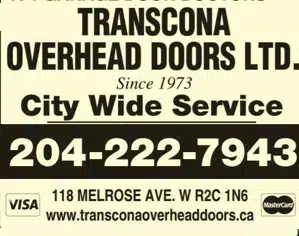A recent article in the Toronton Star (June 15th) laments the fact that hockey is dying out in the Toronto subburb of Scarborough (home of Anson Carter) due to high costs and declining enrollment. Though the article cites the affinity that new Canadians have for sports such as soccer, cricket and badminton, the article further notes that even those people wanting to get into hockey cannot because of the high costs often associated with equipment and ice time.
Obviously, this could be become a huge problem for Hockey Canada, if its not already. Losing any large segment of potential athletes to another sport or to monetary issues could have a detrimental impact not only on international competition, but on all levels of hockey in Canada. Kids seemingly want to play what their friends are playing, and if enough kids in a class eschew hockey for soccer, the slope gets pretty slippery.
So, the question becomes how does one stem this tide? Before I go on, I am not suggesting that kids don’t play other sports at all, but rather that kids be at least given the opportunity to try hockey. I know the game is not for everyone, but it would be a shame for the hockey world to miss out on the next Gretzky or Crosby because he is out on the soccer pitch or playing badminton.
USA Hockey (and Hockey Canada), in conjunction with the NHL and others, have started a program called One Goal, which aims to provide information and assistance to parents and kids who might be either new to the US or Canada and/or who are also new to hockey. This educational program is certainly a step in the right direction, but to me it seems that this initiative requires parents and kids to find One Goal, rather than the other way around. If they are found, does One Goal provide anything in the way of cost relief?
Though I tend to disfavor any kind of government or administrative intrusion into either sport or life in general, I believe this situation requires some assistance. Here are three points I think are feasible to both introduce and pay for that will get kids playing hockey (again):
- First, I would either copy or improve upon the USA Hockey equipment rental program. I was unable to find much information on this, but to the best of my knowledge it allows young players and their parents to rent the needed equipment from season to season (including goalie equipment). This alleviates some of the costs associated with kids in hockey, namely that they outgrow their very expensive equipment very quickly. I would also suggest working with equipment manufacturers to make more “entry level” equipment for kids wanting to try hockey. Torspo Hockey makes a hockey onesie that costs about $100 (if memory serves), which is likely significantly less than buying everything piece-meal. The onesie, called Ice Armor, also helps parents dress kids for hockey without having them learn where everything goes. It might not sound like much, but if you have no previous experience, it could be a daunting task. Perhaps Hockey Canada could partner with Torspo or another manufacturer to expand this entry level line, or purchase sets of equipment to give to minor hockey associations for the purpose of renting them out. The more obstacles one removes to get to kids to hockey, the more kids (and parents) will be enticed to play the game.
- Second, this is along the same lines as the first step, but I would have Hockey Canada pass a rule saying no youth players under bantam age can play with a composite stick. The sticks are somewhat cost prohibitive (especially for working families, immigrant or not) and they provide little in the way of actual benefit to the player. They are basically a status symbol that kids want because thats what NHL’ers use. If you make Hockey Canada the bad guy (or have the NHL pitch in with some advertising on this front) you make a level playing field and ease some costs. I know the manufacturers will pitch a fit, but they were all once very good at making wood sticks. I am sure they haven’t forgot how. I believe countries in Europe (Finland springs to mind) have banned the sticks for under-15’s and I have not heard of any detrimental effects on the little snowflakes’ hockey careers or psyches. Telling new hockey parents who just droppped $500-$600 on equipment that you now have to pony up another $150 on a stick is almost cruel.
- Third, I would partner with the CBC/TSN etc. to get more broadcasts in the native tongues of immigrants. I know there is already a HNIC Punjabi broadcast, so why not hire a few more play by play people to call the games in other tongues? I am all for assimilation and making people “Canadian”, but that can come with time. If people can watch and follow hockey in their own language, they might be better able to understand the game and more likely to get their kids involved.
- Last, I would have Hockey Canada put together a traveling hockey exhibition in each province, with the focus on cities with large immigrant populations. You can buy very good synthetic ice now, so pack up a few trailers and go around demonstrating the game, or better yet, make it interactive. Let the kids take a couple laps on skates or shoot a few pucks. Its my belief that once kids get a taste, they will want more.
While I acknowledge that this is a pretty simplistic formula to get kids back, one has to admit that something should be done quickly. Every year we let go without getting new kids into hockey weakens a draft class (don’t laugh, it can happen) and diminishes Canada’s standing on the world stage. USA Hockey is creating regional development centers to help grow hockey in the less traditional markets and if we don’t look after hockey in our backyard, we may be faced with a generation in the hockey hinterland.
Anything to add? Suggestions on how to help? Think I am a xenophobic nut case? Lets hear it in the comments.




